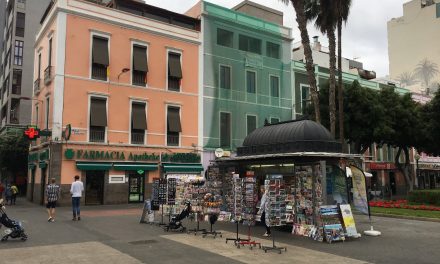Gran Canaria, Tenerife, La Palma, La Gomera and El Hierro remain at level 3; and Fuerteventura and Lanzarote at level 2. The daily average of conventional hospital beds occupied by covid patients throughout the Archipelago as a whole has decreased by 18.4% compared to the previous week and that of ICU beds decreased by 12%.
The Canary Islands Ministry of Health on Thursday, March 17, updated health alert levels, following this week’s epidemiological report from the General Directorate of Public Health, with consolidated data as of March 16. The report on the evolution of health indicators for COVID-19 on all the islands decides the appropriate alert levels for each.
Gran Canaria, Tenerife, La Palma, La Gomera and El Hierro remain at alert level 3; and Fuerteventura and Lanzarote (where La Graciosa is included epidemiologically) at level 2. All with greatly reduced measures and few restrictions now in place on hospitality businesses.
The epidemiological situation of each territory is based fundamentally on hospital pressure (bed occupancy indicators now being the determining factor for analysing the trends and severity of COVID-19) and the incidence on the transmission of the coronavirus, according to the modifications established within the Inter-territorial Council.
Healthcare indicators
Care indicators show a favourable evolution and the daily average number of occupied conventional hospital beds has decreased by 18.3% compared to the previous week, with an average occupancy rate of 5%, this indicator remains at medium risk. The percentage occupation in Gran Canaria, Tenerife, La Palma and La Gomera are all at medium risk; Fuerteventura is at low risk and Lanzarote and El Hierro are at very low risk. The number of occupied ICU beds continues with the downward trend, falling 12% compared to the previous evaluation. ICU occupation for the whole of the Archipelago is 9.7%. Tenerife and Gran Canaria are at medium risk, while the rest of the islands remain in controlled circulation.
Epidemiological indicators
In the Regional Autonomous Community as a whole, between March 8 and 14, saw 9,162 new cases of COVID-19 reported, representing a 3.3% increase in the daily average of new cases in relation to the previous week. These data respond to a 3.3% increase in Accumulated Incidence (AI) at 7 days throughout the Canary Islands. From a weekly average of 407.4 cases per 100,000 population, this figure rose to 421.1 cases per 100,000 this week.
All the islands remain at very high risk for this indicator, except Fuerteventura and Lanzarote, which are at a medium and high risk, respectively. The island that has risen the most in this indicator is Tenerife, followed by La Gomera.
The 7-day AI for people over 65 years of age has risen to 29%, the Autonomous Community as a whole, and all the islands, are at very high risk in this indicator. The greatest increase is observed on the island of La Palma, followed by La Gomera.
The 14-day AI fell by 3.7%, although the level of risk is still very high for the whole of the Archipelago.













